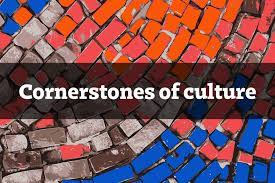Embracing the Solo Traveller Experience: A Journey of Self-Discovery
The Joys and Challenges of Being a Solo Traveller
Travelling solo is a unique experience that offers both incredible opportunities for personal growth and moments of solitude. For many, embarking on a solo journey is a chance to explore the world on their terms, free from the constraints of group dynamics and schedules.
One of the most rewarding aspects of solo travel is the freedom it provides. Solo travellers have the flexibility to choose their destinations, activities, and pace without having to compromise with others. This independence allows for a deeper connection with the places visited, as well as with oneself.
However, solo travel also comes with its own set of challenges. Navigating unfamiliar territories alone can be daunting, especially in countries where language barriers exist. Safety concerns may also arise, prompting solo travellers to exercise caution and vigilance throughout their journey.
Despite these challenges, many solo travellers find that the benefits far outweigh the risks. The sense of accomplishment that comes from successfully navigating a foreign city or making new friends along the way is unparalleled. Solo travel fosters self-reliance, confidence, and adaptability – qualities that can be invaluable both on the road and in everyday life.
Ultimately, whether you’re seeking solitude or adventure, embarking on a solo journey can be a transformative experience. It offers a chance to step out of your comfort zone, discover new perspectives, and create lasting memories that are uniquely your own.
Top 5 Essential Tips for the Solo Traveller
- Research your destination thoroughly before you go.
- Pack light and only bring the essentials.
- Stay connected with family and friends back home.
- Trust your instincts and stay aware of your surroundings.
- Make an effort to meet new people and be open to new experiences.
Research your destination thoroughly before you go.
Before embarking on your solo travel adventure, it is crucial to research your destination thoroughly. Understanding the local customs, culture, and potential risks can help you navigate unfamiliar territories with confidence and preparedness. By familiarising yourself with the local language, transportation options, and safety guidelines, you can enhance your overall travel experience and mitigate any unexpected challenges that may arise. Comprehensive research ensures that you make the most of your solo journey while staying informed and proactive throughout your travels.
Pack light and only bring the essentials.
When embarking on a solo travel adventure, it is essential to pack light and bring only the essentials. Travelling with minimal luggage not only makes it easier to move around independently but also reduces the risk of feeling weighed down by unnecessary items. By packing light, solo travellers can enjoy greater mobility and flexibility, allowing them to focus on the experiences and destinations ahead without being burdened by excess baggage. Prioritising essentials such as versatile clothing, travel documents, and personal care items ensures a smoother and more enjoyable journey.
Stay connected with family and friends back home.
It is crucial for solo travellers to stay connected with their family and friends back home while on their journey. Regular communication not only provides a sense of comfort and security but also allows loved ones to stay updated on the traveller’s well-being. In case of emergencies, having a support system in place can be invaluable. Whether through phone calls, messages, or video chats, maintaining these connections helps bridge the distance and ensures that solo travellers feel connected to their roots even as they explore new horizons.
Trust your instincts and stay aware of your surroundings.
It is essential for solo travellers to trust their instincts and stay vigilant of their surroundings. Intuition often serves as a valuable guide, helping individuals assess potentially risky situations and make informed decisions while exploring unfamiliar places alone. By remaining aware and observant, solo travellers can better navigate new environments, anticipate any potential dangers, and ensure their safety throughout their journey.
Make an effort to meet new people and be open to new experiences.
When travelling solo, it is essential to make an effort to meet new people and be open to new experiences. Engaging with locals and fellow travellers can enrich your journey by providing insights, recommendations, and meaningful connections. By stepping out of your comfort zone and embracing unfamiliar situations, you open yourself up to a world of possibilities that can enhance your travel experience in ways you never imagined. Embracing spontaneity and welcoming new encounters can lead to memorable moments and lasting friendships that truly enrich your solo adventure.

